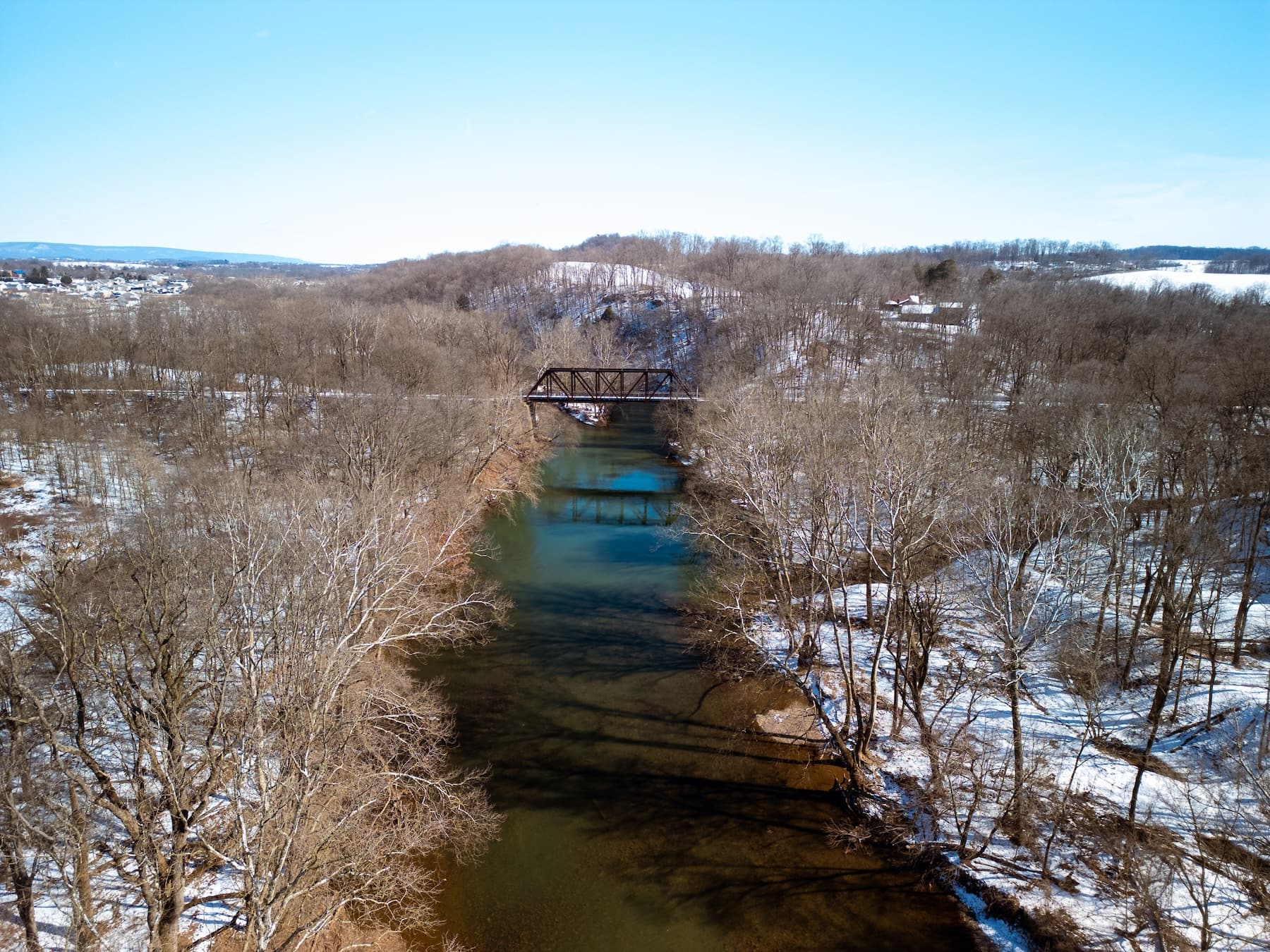Last week’s Wednesday work-day meeting of the Friends of the Union Canal Tunnel Park saw an old-fashioned ice saw put to use in a practice that has largely been forgotten since the advent of mechanical refrigerators.
Pete Silldorff, a member of the all-volunteer team that performs maintenance and tours at the park, found the saw and convinced his fellow teammates to venture out onto the ice on the Union Canal to cut a few blocks of the stuff. Fortunately, the ice was thick on Wednesday, and nobody took an unexpected winter dip in the canal.

Silldorff found the old saw, which he guessed is around 100 years old, at the recently sold Lebanon property of his daughter and son-in-law. After testing out the depth of the ice on top of the Union Canal, he decided on a whim to try cutting a few blocks with the help of the other Friends of the UCTP, including Howard McFadden, Fritz Heilman, Craig Bucher, and Boy Scout Ross Gerberich, who had recently completed a community service project for the park as part of his Eagle Scout requirements.


Armed with the long saw and a small rake, the volunteers managed to cut out a few pieces and fish them from the water.
Ice cutting was a significant industry in the days before mechanical refrigeration, and there were operations at several locations in Lebanon County including an ice dam that once existed between Colebrook and Mount Gretna. According to Packaged Ice, the industry was a dangerous but thriving one, especially in the latter half of the 1800s.

Read More: Ever wondered how ice would have been harvested at the Colebrook Ice Dam?
Silldorff, a Lebanon native, recalled his own experiences growing up on Chestnut Street with an icebox and an ice delivery man.
“Ice was cut because nobody had regular refrigeration,” Silldorff explained. “I can recall that my grandfather had an ice pond right across from Wengert’s Dairy [Swiss Premium Dairy] in the field by the Snitz Creek.”
Ice cutting on the canal isn’t likely to become a tradition, but the Friends of the UCTP are turning their attention to the upcoming season with the hopes that their annual Union Canal Days can be held in May; the celebration was cancelled in 2020 due to the pandemic.
Questions about this story? Suggestions for a future LebTown article? Reach our newsroom using this contact form and we’ll do our best to get back to you.

Support Lebanon County journalism.
Cancel anytime.
Monthly
🌟 Annual
- Fewer ads
- Member newsletters
- Exclusive events
- All monthly benefits
- Most popular option
- Make a bigger impact
Already a member? Log in here to hide these messages
Lebanon County needs modern local journalism that works. LebTown delivers timely, accurate reporting without paywalls or corporate mandates. Support our independent newsroom with a monthly or annual membership, or make a one-time contribution to fuel more local coverage. Cancel anytime.

































